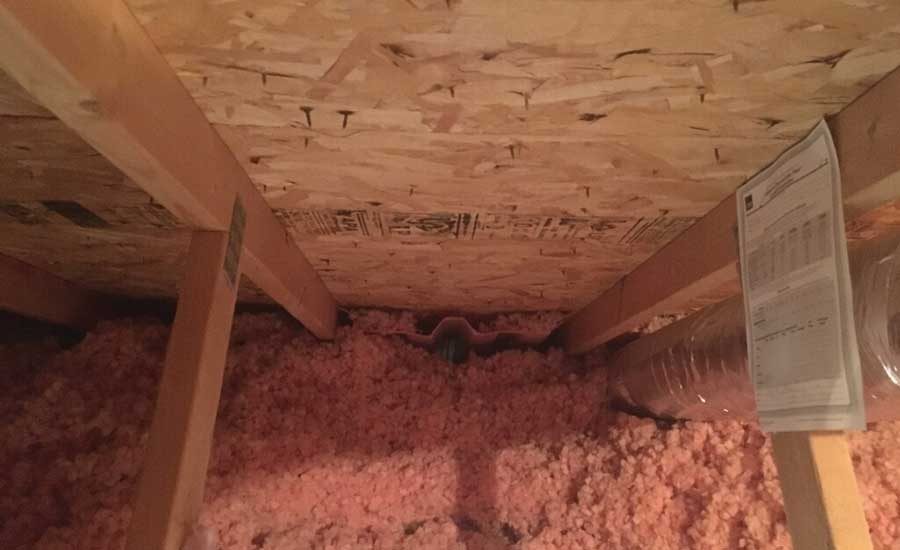What Is the Most Effective Roof Ventilation?
Your attic ventilation system's base is made up of roof vents. They allow your attic to breathe and protect your roof from heat and moisture. These are the two most important types of roof vents and their benefits for your home. Moreover, to install roof vents, you must go to work with local roofers. They are highly skilled and experienced in roof repair and installation. Let’s continue to read the article:
What products are necessary for an effective roofing ventilation system?
Roofing ventilation systems consist of exhaust and intake vents. These products can be combined to create a roofing ventilation system that helps reduce the temperature and excess moisture.
Your roofing ventilation system includes intake vents. These are located near or at the base of your roof. The vents let fresh air in from the outside. The roofing ventilation system will not work if there is no airflow. This can reduce the effectiveness of the system and possibly cause roof system damage.
The air current flows through your roofing, then out through exhaust vents located at or near the roof's top. These vents protect your roof system from the outside in. Exhaust ventilation near the roof ridge mustn't exceed intake air ventilation near the soffit.
Types of intake vents
There are two types: rooftop intake vents and soffit vents. If a home has roof overhangs or slopes, it will have soffit ventilation. The soffit vent is located at the very lowest point of the roof. This allows fresh air to enter the attic. There are many styles of soffit vents available, including continuous strips and individual vents. Rooftop intake vents are a great option for homes with low or no soffits. They don't require homeowners to install new or modify existing soffits.
Choose Exhaust Vents to Ventilate Your Attic
The best exhaust ventilation is located at the roof's highest point, where warm and humid air can escape. There are three main types of exhaust vents: powered, static, and mechanical.
Static exhaust vents
Static exhaust vents don't require electricity because they use the natural flow and heat of hot air.
There are three types:
- Ridge vents are common in homes. This type of exhaust vent works well and is easy to place at the peak or ridge of the roof. This is the best place to let hot air escape from the attic. Ridge vents blend in with the roof's finished look because of their low profile. These vents are covered with ridge cap shingles.
- Hip vents - Hip vents look and work in the same way as ridge vents. These vents are useful for ventilating homes that have hip roofs with very little or no ridge. The hip vents run the length of the hip. Air slots beneath the vents are only located at the top of the hip. This gives the vents a uniform appearance. You can combine hip vents with ridge vents depending on your roof design to give your attic the exhaust it needs.
- Roof louvers Also called box vents, roof louvers are another option for exhaust ventilation. They can be used on modern roof designs, small roof areas, and roofs with a limited or absent ridgeline. Because of their small size, roof louvers often require multiple vents to provide adequate exhaust ventilation. For a more streamlined appearance, louvers can be mounted on the back of the roof. They can be used on either new or existing roofs.
- Powered exhaust vents
The exhaust vents are powered and can remove large volumes of warm, humid air. These vents can be powered by solar or electric power, and are often called dual-powered, hybrid, or hybrid. They have different airflow ratings. The vents exhaust air faster if they have a higher CFM (cubic feet per minute) rating. Powered vents typically include thermostat control with some models available with an optional humidistat/thermostat control.
There are two types of common powered exhaust vents.
- Roof-mounted These exhaust vents can be installed over openings on the roof deck.
- Gable mounted: This type of exhaust vent is easy to install from the inside of your attic. It helps prevent roof penetration.
- Mechanical exhaust vents
Wind turbines are mechanical exhaust vents that harness the power and wind power to remove heat from the attic. The turbine spins and draws heat and moisture from the attic if there is enough wind. Turbines are higher than other exhaust options. They move air more effectively, however, because they sit higher above the roof. Their function is the same as a static exhaust vent, except that there is no wind.
What Types of Roof Vents Are Best for My Home?
Each home is unique. Your home's architectural style and roof design will determine the best vents. You should not mix exhaust vents from different manufacturers in the same attic space. This can cause airflow problems.
A qualified roofing professional will install a balanced attic venting system with intake and exhaust vents to reduce heat and moisture.

